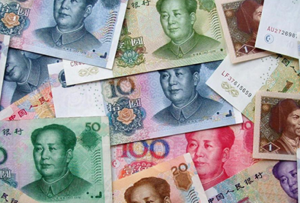In a market economy, when you need something, you go out and buy it. Liquidity is no different, in that respect at least. If it is market liquidity that you need, you go to a dealer, who stands ready to buy what you are selling. You pay for the convenience, though—the dealer is getting more for the same asset than you are. If it is funding liquidity that you need, you go to your bank, who stands ready to lend. You pay for the convenience, though—the bank is paying less for its funds than you are.
Stick with funding liquidity for a moment. A bank is well suited to provide such liquidity, since a bank’s liabilities are money, and it can create them at will. If the need for funding liquidity is systemic, the bank that can provide it must be the one whose liabilities are interbank money—the central bank.
And if the need for liquidity is international? The country that issues the world’s reserve money can create more of it, and that might be enough to stave off the crisis. Might some other asset do the job?
The eurozone crisis has sparked fears of a global need for liquidity. Domenico Lombardi and Sarah Puritz Milsom propose that a new allocation of special drawing rights could increase eurozone countries’ ability to backstop the peripheral sovereign debt that still constrains their banks’ ability to raise funds.
Do SDRs provide international liquidity? Can the IMF serve as a bank, creating more money to meet the world’s need for liquidity?
The SDR is a reserve asset, in fact a reserve asset only for the top of hierarchy of money, as they can be held only by central banks. The SDR is opaquely defined as “a potential claim on the freely usable currencies of the IMF member countries”. This linguistic muddle reflects the bureaucratic muddle that surrounded the SDR’s creation. “Paper gold” or credit money, went the debate, and in the end the SDR is neither.
Gold—outside money—is distinguished by its aggregate stock’s independence of short-term liquidity needs. Credit—inside money—is highly responsive to short-term liquidity needs arising from ordinary banking business. The SDR, for its part, is created with the consent of 85% of the votes of IMF members, so it has neither the indifference of gold nor the responsiveness of credit.
In that they are a purely financial concoction, SDRs are arguably more like credit than they are like gold. But credit money is a claim on the issuer, and SDRs are carefully described as potential claims, and not claims on the IMF, but rather claims on the “freely usable currencies of the IMF member countries”.
In practice, this means that the IMF acts as a broker in the market for SDRs, matching buyers and sellers. But it does not—can not—act as a dealer by buying and selling on its own account. What happens, then, when a seller cannot be matched with a buyer? The IMF can, in theory, assign the transaction to a member central bank, who would be obligated to provide national currency for the SDRs. This is in sharp distinction to a bank, which must allow its own balance sheet to fluctuate in size in the handling of payments.
SDRs could back the extension of guarantees of eurozone sovereign debt to European banks. But the eurozone’s funding needs are surely in the hundreds of billions of euros, if not into the trillions. If those guarantees were called upon, it would be euros, not SDRs, that would have to be paid to make whole the private holders of sovereign debt. The SDRs would have to be sold. The IMF would be powerless to assign them in sufficient size to generate the needed euros.
The IMF, this is to say, is no bank. Because it cannot, in practice, make liquid the market for SDRs, a new allocation would turn a funding liquidity crisis on the part of European banks into a market liquidity crisis on the part of central banks. Rather than eurozone banks being unable to borrow, the Eurosystem would have no way to sell a trillion euros’ worth of SDRs. Such a crisis unlikely to come about, I hasten to add. Market participants and central bankers will look through the proposal and see that it creates no new liquidity.




